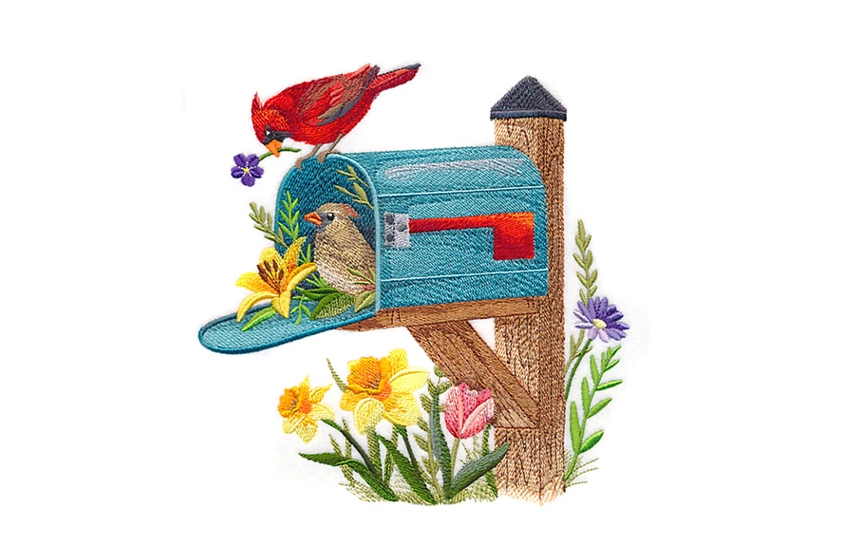Faux suede and embroidery are a natural match. Go into your local fabric store and you'll find a whole rainbow of fabrics with a soft, suede-like texture, pre-embellished with embroidery, designs pressed into them, woven or printed patterns, and more.
It's easier than you might think to embroider on this fabric - because it's synthetic, its soft nappy surface won't get the hoop burn that real suede or more plush fabrics like velvet would. And unlike with real leather, the needle won't leave visible holes in the fabric every time it pokes through. Suede-like fabrics tend to be easy to care for and come in a wide variety of weights and textures. With all these options, you're sure to find a suede project that needs the soft touch of stitching!
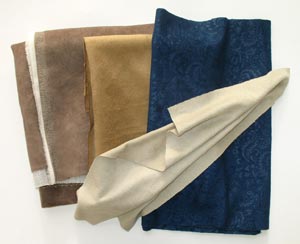
Suede-like fabrics can be found in both the fashion and home decor sections of your local fabric store, and the two are likely to be somewhat different. Faux suede for home decor will be a bit heavier - designed for things like pillows and curtains. In general, these are woven and not very stretchy. Faux suede made for clothing are somewhat lighter and drapier, and may be embellished in various ways. Some of these are relatively stable (and based on a woven fabric), and some are light and stretchy (with a knit base).
Design: Once you choose the right fabric for your project, match the weight of your design to the weight of your fabric. Drapey, stretchy suede will need a light and open design so that the fabric can "flow" even where the design is. Redwork or toile would be good choices. As the fabric gets heavier, the design can get more solid. You don't need to worry about stitches getting "lost" in the peach-fuzz texture of the fabric - even light designs like redwork will be visible.
Needle: Use a 75/11 sharp needle. These fabrics can be on the heavier side, so you want a needle that will pierce the fabric well. You don't need to use a special leather needle or worry about holes left behind - it's a synthetic fabric, so it'll get along with your machine much better than real leather.
Stabilizer: For these examples, I used a medium-weight (2 oz.) cutaway stabilizer. If you're using one of the especially light and drapey fabrics where you want to preserve the "flow," and you're stitching a very light design such as redwork, you might be able to get away with tear-away stabilizer. As always, to play it safe and prevent puckering, use cutaway.
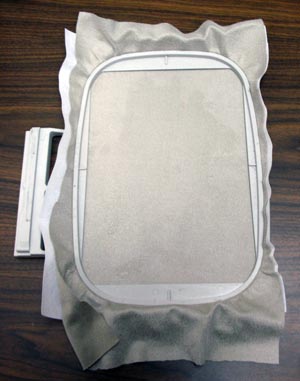
Hooping: Hoop faux suede just as you do most fabrics. Spray your stabilizer with spray adhesive (I use Gunold KK100), then smooth the fabric on top. Hoop the two layers together, and test to make sure they're held firmly in place. Since the fabric is synthetic, you shouldn't have to worry about hoop burn. Rubbing or washing the fabric will remove any indentations made by the hoop.
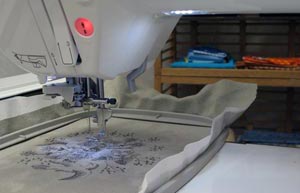
Embroider the design.
After the design is finished stitching, trim the cutaway stabilizer close to the design.
That's it - you're done!

Choose shades of the same color for a classy, understated look.
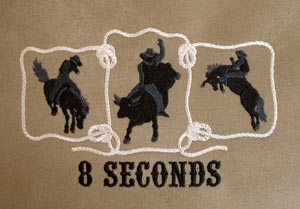
Since faux suede is inspired by real leather, it's a great choice for western projects.

Even the "fancy" faux suedes from the fashion fabrics department can make an inspiring canvas for embroidery. This one has a pattern similar to "burnout" velvet, with fuzz removed in some places to make a textured design on the fabric.
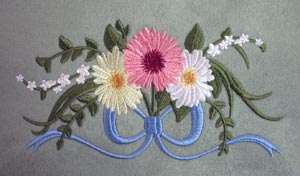
Heavier suede from the home decor department can take a filled design well, making unique personalized pillows, furniture covers, or even upholstery.
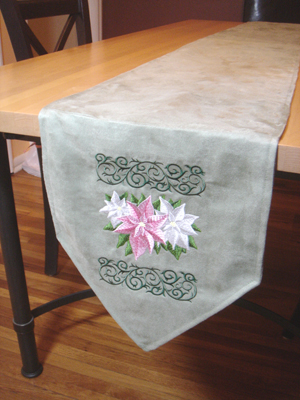
This table runner project uses faux suede - a great way for you to experiment with the fabric. The design used is a poinsettia for a Christmas theme, but choose any that you'd like to match your decor, taste, or special occasion.


